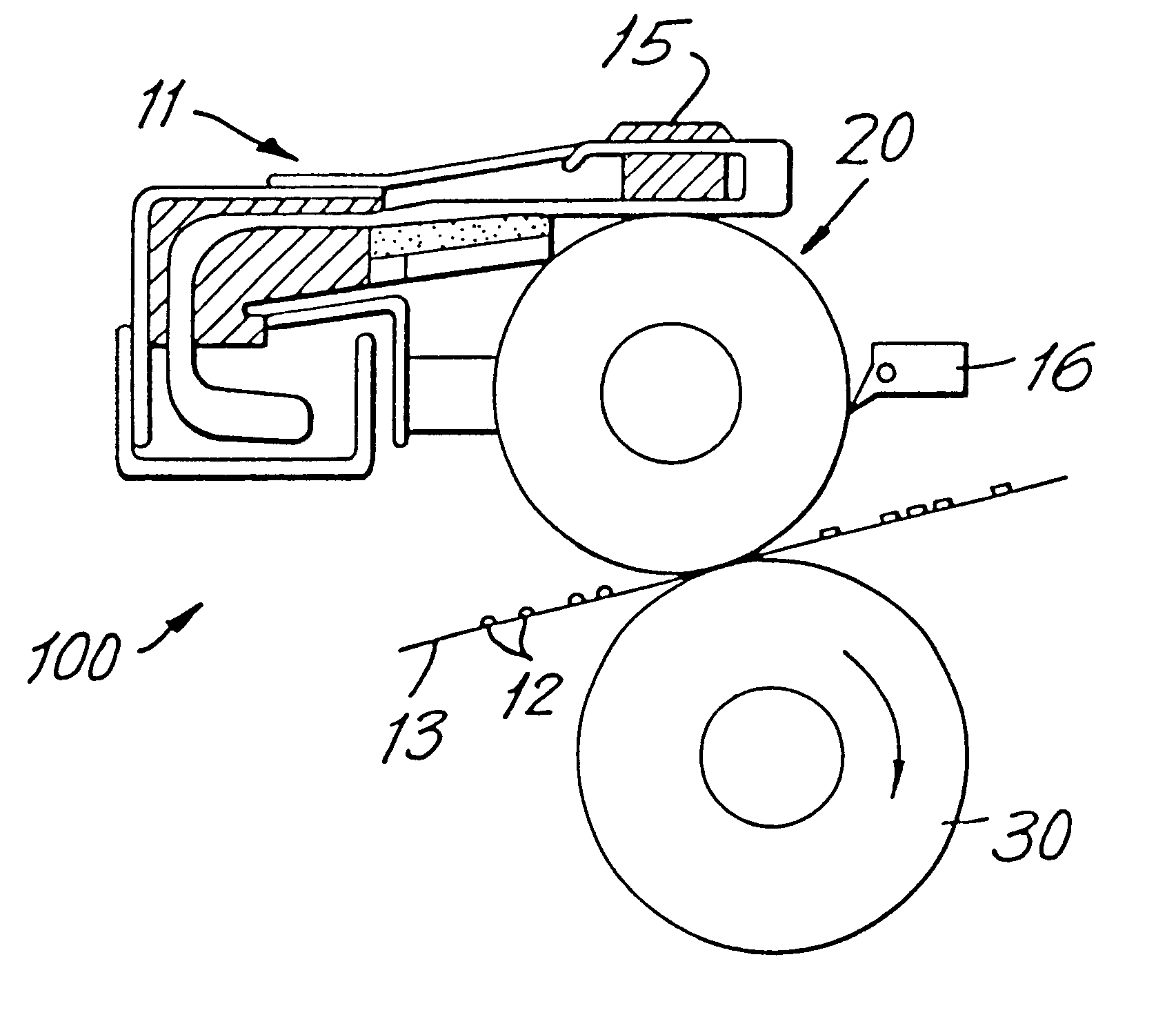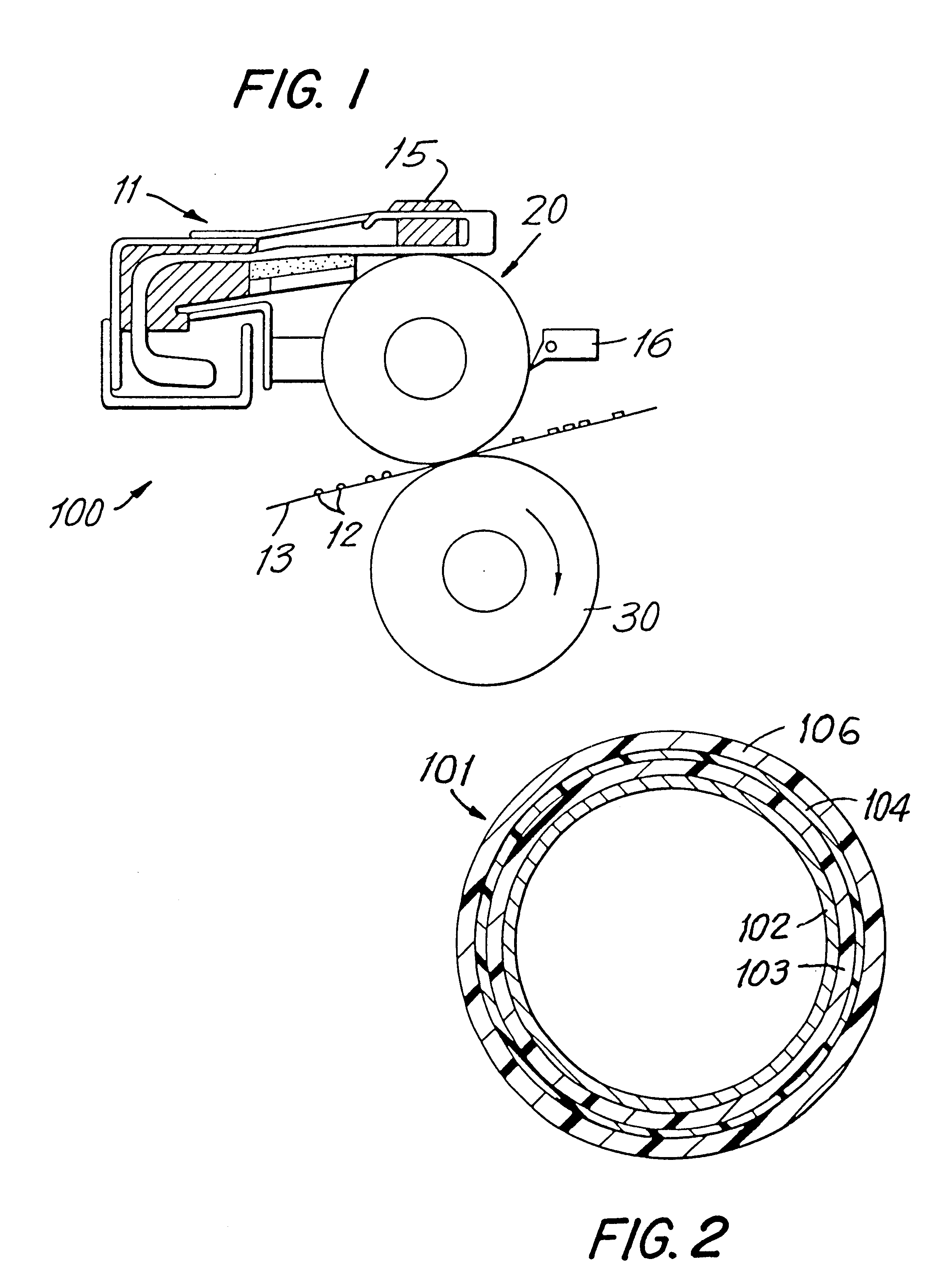Multilayer fuser rolls having fluoropolymer coating on a compliant baselayer and method of forming
a technology of fluoropolymer coating and fuser roll, which is applied in the field of multi-layer fuser rolls, can solve the problems of silicone compounds, affecting the compliance of the baselayer, and the fluoropolymer resin alone, and achieves the effect of facilitating the separation of paper 13
- Summary
- Abstract
- Description
- Claims
- Application Information
AI Technical Summary
Benefits of technology
Problems solved by technology
Method used
Image
Examples
Embodiment Construction
1-6
Tables I and II provide a summary of the results obtained using various combinations of components coming within the scope of the invention. Table I shows the results using different PTFE primers and topcoat compositions on the silicone rubber baselayer.
Table II sets forth the results demonstrating the improved bonding levels between the fluoroelastomer coating and the silicone rubber baselayer in accordance with the invention. Run 1 utilizes a Vistamer high density polyethylene from Composite Particles, Inc. dispersed in a Thixon silane often used as a silicone rubberprimner material. The bond level of 0-2 is poor and not acceptable. A bond level of 8-10 is fully acceptable.
A marginally acceptable bond level of 4-5 is obtained when Versamid 100 is dispersed in Chemlock 607. Similar but somewhat better results are obtained when Versamid 100 or Micromid 632 HDL are dispersed in mixtures of Chemlock 5151 and Chemlock 607. The most acceptable and highest bond levels are achieved whe...
PUM
| Property | Measurement | Unit |
|---|---|---|
| weight percent | aaaaa | aaaaa |
| weight percent | aaaaa | aaaaa |
| weight percent | aaaaa | aaaaa |
Abstract
Description
Claims
Application Information
 Login to View More
Login to View More - R&D
- Intellectual Property
- Life Sciences
- Materials
- Tech Scout
- Unparalleled Data Quality
- Higher Quality Content
- 60% Fewer Hallucinations
Browse by: Latest US Patents, China's latest patents, Technical Efficacy Thesaurus, Application Domain, Technology Topic, Popular Technical Reports.
© 2025 PatSnap. All rights reserved.Legal|Privacy policy|Modern Slavery Act Transparency Statement|Sitemap|About US| Contact US: help@patsnap.com


